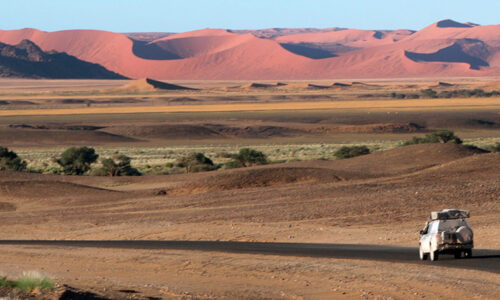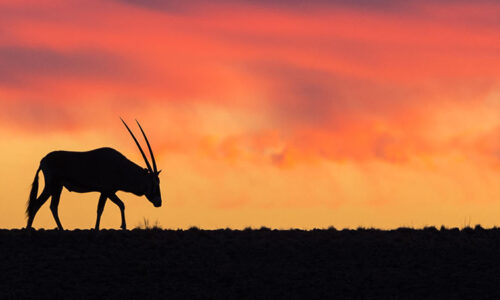




From the seemingly endless sand dunes of the Namib Desert to the tropical wetlands of the Zambezi Region (Caprivi Strip) the allure of Namibia is that it is four countries in one.
Four different landscapes, each with its own characteristics and attractions. The most definitive is the Namib, a long coastal desert that runs the length of the country and is highlighted with migrating dune belts, dry riverbeds and canyons. The central plateau is home the majority of Namibia towns and villages and is divided between rugged mountain ranges and sand-filled valleys.
Next is the vast Kalahari Desert with its ancient red sand and sparse vegetation. Finally, Kavango and Zambezi, blessed with generous amounts of rain and typified by tropical forests, perennial rivers and woodland savannahs.
Conservation is a cornerstone of the Namibian experience.
Namibia was the first African country to incorporate protection of the environment into its constitution, and the government has reinforced this by giving its communities the opportunity and rights to manage their wildlife through communal conservancies.
Today, over 43% of Namibia’s surface area is under conservation management. This includes national parks and reserves, communal and commercial conservancies, community forests, and private nature reserves.
After Independence in 1990, visionary conservationists in the field and the Ministry of Environment and Tourism enacted policy changes that allowed rural communities to benefit from wildlife by forming conservancies. In 1998, the first four conservancies were registered.
Today, more than 70 registered conservancies embrace one in four rural Namibians. A sense of ownership over wildlife and other resources is encouraging people to use their resources sustainably. Wildlife is now embraced as a complimentary land use method to agriculture and livestock herding.
People are living with wildlife, including predators and large mammals, and are managing their natural resources wisely. They are also reaping the benefits. In 2009, community-based natural resource management generated over N$ 42 million in income to rural Namibians. All the while, the program is facilitating a remarkable recovery of wildlife.
Namibia now boasts the largest free-roaming population of black rhinos and cheetahs in the world and is the only country with an expanding population of free-roaming lions. Namibia’s elephant population more than doubled between 1995 and 2008 from 7,500 to over 16,000 individuals. This remarkable turnaround has led some to call Namibia’s conservation efforts the greatest African wildlife recovery story
The history of this land can be found carved into rock paintings found to the south and in Twyfelfontein, some dating back to 26,000 B.C. A long lineage of various groups including San Bushmen, Bantu herdsmen and finally the Himba, Herero and Nama tribes among others have been making this rugged land home for thousands of years.
But, as Namibia has one of the world’s most barren and inhospitable coastlines, it wasnt until the middle of the nineteenth century that explorers, ivory hunters, prospectors and missionaries began to journey into its interior. Beyond these visitors, Namibia was largely spared the attentions of European powers until the end of the 19th century when it was colonized by Germany.
The colonization period was marred by many conflicts and rebellions by the pre-colonial Namibia population until WWI when it abruptly ended upon Germany’s surrender to the South African expeditionary army. In effect, this transition only traded one colonial experience for another.
In 1966 the South West Africa People’s Organisation (SWAPO) launched the war for liberation for the area soon-named Namibia. The struggle for independence intensified and continued until South Africa agreed in 1988 to end its Apartheid administration. After democratic elections were held in 1989, Namibia became an independent state on March 21, 1990.
To date, Namibia boasts a proud record of uninterrupted peace and stability for all to enjoy.
This is Africa and the climate reflects it. But just as Namibia is filled with contrasting geography, equivalent climactic differences do apply depending on your location.
Partially covered by the Namib, one of the world’s driest deserts, Namibia’s climate is generally very dry and pleasant. The cold Benguella current keeps the coast cool, damp and free of rain for most of the year. Inland, all the rain falls in summer (November to April). January and February are hot, when daytime temperatures in the interior can exceed 40ºC (104ºF), but nights are usually cool. Winter nights can be fairly cold, but days are generally warm and quite nice.
The bottom line: Namibia is a year-round destination. Just pack accordingly.
Endless horizons, clear skies and a population density that ranks among the lowest in the world it all combines to give visitors a true sense of freedom. This is part of what makes Namibia the quintessential African vacation.
Whether your interest is in wildlife, landscape, adventure, people, culture as your days here will be filled with plenty of sunshine, beautiful sights and unforgettable experiences found nowhere else on earth. Only in Namibia.
NAMIBIA ON THE MAP
Top Attractions
Discover the amazing natural wonders of Namibia!
-
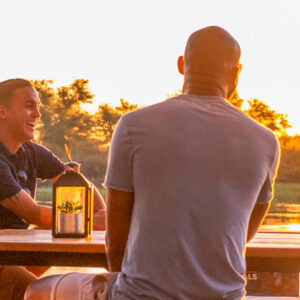
4 Rivers Mobile Camping – 10N
$1,550.00Starting and ending from Victoria Falls in Zimbabwe, this is the safest and cost effective way to discover the Zambezi Region of Namibia (formally known as Caprivi), its 4 rivers (Kwando, Okavango, Linyanti and Zambezi) and the amazing National Parks (Nkasa Rupara NP, Mudumu NP, Bwabwata NP and Mahango Game Park).
*this tour can be also organised departing/ending from Livingstone or Kasane on request.
Select date(s) -
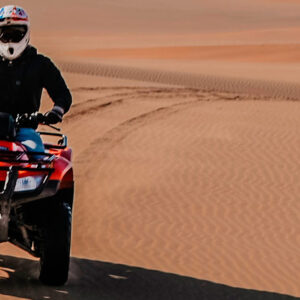
90 MIN Quad tour
$43.00Experience the thrill of the quad biking through the Namibian sand dunes.
Select date(s) -
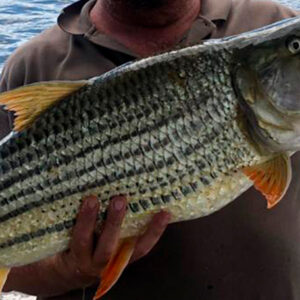
Fishing – Zambezi River (Full Day) NAM
$192.00 – $223.00Be it landing the legendary and exhilarating Tigerfish, or the mystical Nembwe or any of the other array of Bream and Catfish species is what you are after… We offer you the best chance of realizing that dream!
Select date(s) -

Tandem Skydive
$248.00Take a scenic flight up to your selected altitude and see the unique Atlantic Ocean where it meets the Namib Desert Dunes. The aircraft door opens, and you jump attached to a world-class tandem instructor.
Select date(s)




